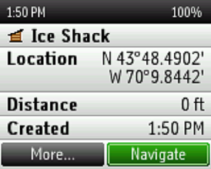


Then 47 seconds, so almost another 5 ticks on the map. So starting with the East/West bearing (Longitude), lets find 69 degrees. When dealing with this format, remember that there are 60 seconds in a minute and 60 minutes in a degree. Now back to the map, note that there are 12 tick marks between minutes. From here, copy on your piece of paper the coordinates from either the Location, waypoints or messages screens. We will choose degrees, minutes & seconds. Next, we want to match the position format displayed on the inReach to what’s on the map. You’ll need to use the Earthmate app and select the additional settings to read from your smartphone instead of the device. This is important since our inReach only has WGS 84 as a datum setting.īare in mind that other topo maps, like from Canada are usually in UTM format and using NAD 83 Datum. We don’t see a datum specified, we will assume that it’s the defacto setting that pretty much every GPS is set to when you take it out of the box: WGS 84. Here in this map we have Lat/Lon in degrees, minutes & seconds along with decimal format. Next, look at the map to see what the format the coordinates are. Here in our example, we happen to have a topo map produced by Delorme of Baxter State Park in Maine.įirst thing is to look at the legend and with a piece of paper & pencil, mark out the scale tick marks.

Let’s say that we need to plot a set of coordinates from our inReach onto a paper map. We will take a quick look at how we can take coordinates from our current location or saved waypoints on our Delorme inReach SE or Explorer.


 0 kommentar(er)
0 kommentar(er)
